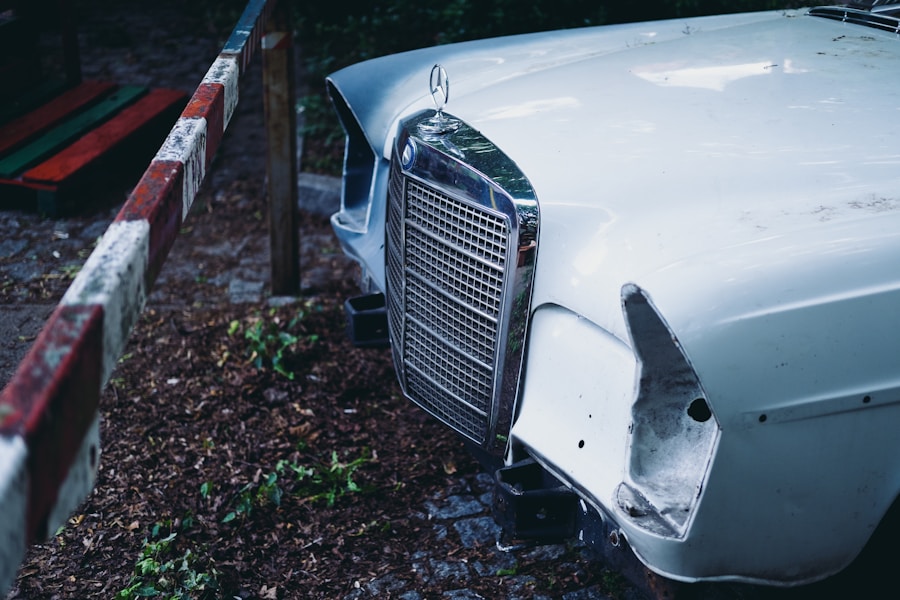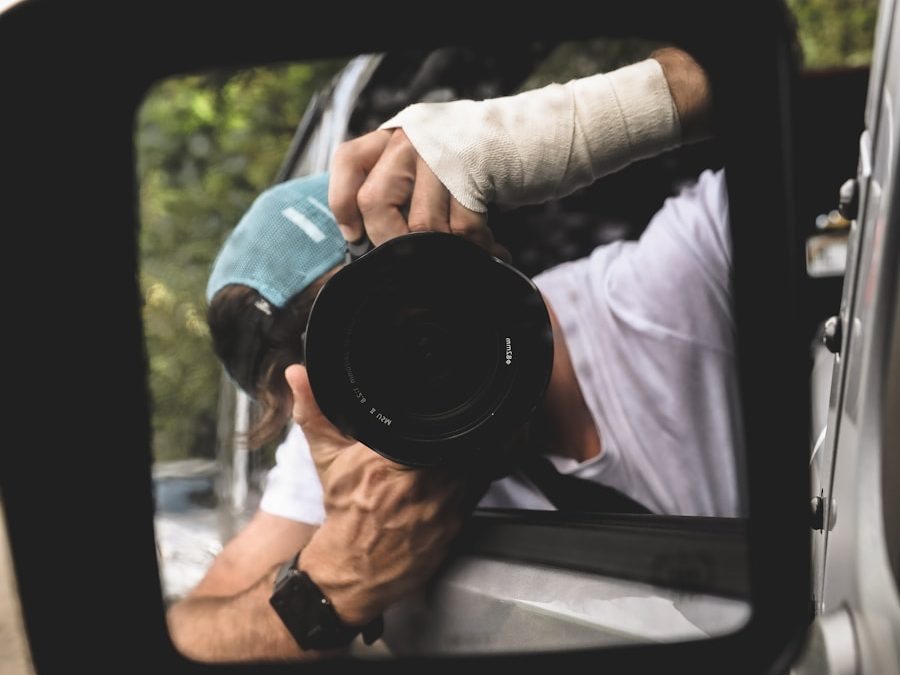Accident documentation is a critical component in the aftermath of any vehicular incident. The significance of meticulously recording details cannot be overstated, as it serves multiple purposes that can influence the outcome of insurance claims, legal proceedings, and personal accountability. When an accident occurs, emotions can run high, and the chaos of the moment can cloud judgment.
Having a structured approach to documentation helps ensure that vital information is captured accurately and comprehensively. This not only aids in establishing the facts of the incident but also protects the rights of those involved. Moreover, thorough documentation can significantly impact the financial ramifications following an accident.
Insurance companies rely heavily on the information provided to assess claims and determine liability.
For instance, if a driver fails to document the position of vehicles or the conditions at the scene, they may find themselves at a disadvantage when negotiating with their insurer or in court.
Therefore, understanding the importance of thorough accident documentation is essential for anyone involved in a vehicular incident.
Key Takeaways
- Thorough accident documentation is crucial for insurance claims and legal proceedings
- Include details such as date, time, location, weather conditions, and any injuries sustained
- When taking photos at the accident scene, capture the overall scene, close-ups of damage, and any contributing factors
- Gather witness statements by asking for contact information and a detailed account of what they saw
- Understand the insurance claim process, including deadlines, required documentation, and communication with the insurance company
What to include in accident documentation
Foundational Information
First and foremost, basic information such as the date, time, and location of the accident should be recorded. This foundational data sets the stage for understanding the context of the incident.
Environmental Factors and Parties Involved
Additionally, capturing the weather conditions at the time—whether it was raining, foggy, or clear—can provide insight into potential contributing factors. Beyond these initial details, it is essential to gather information about all parties involved in the accident. This includes names, contact information, insurance details, and vehicle registration numbers.
Vehicle and Damage Details
Furthermore, documenting the make and model of each vehicle can be beneficial, especially if there are disputes regarding damages or repairs later on. It is also advisable to note any visible damages to vehicles and property, as well as any injuries sustained by individuals involved in the accident. This level of detail not only aids in insurance claims but can also be pivotal in legal situations where liability is contested.
Tips for taking photos at the accident scene

Photographic evidence can be one of the most compelling forms of documentation following an accident. To maximize the effectiveness of photos taken at the scene, it is important to approach this task methodically.
This provides context and helps illustrate how the accident occurred. Additionally, take close-up shots of any damages to vehicles and property, as well as any relevant road signs or signals that may have played a role in the incident. Lighting conditions can significantly affect the quality of photographs, so it is advisable to take pictures from multiple angles and perspectives.
If possible, photograph any skid marks or debris on the road, as these can provide crucial evidence regarding speed and impact. Furthermore, consider including images of any injuries sustained by individuals involved in the accident; however, be sensitive to privacy concerns and ensure that consent is obtained if necessary. Lastly, using a smartphone or camera with a timestamp feature can add credibility to your documentation by providing an accurate record of when each photo was taken.
How to gather witness statements
| Step | Description |
|---|---|
| 1 | Identify potential witnesses to the incident |
| 2 | Approach witnesses in a private and comfortable setting |
| 3 | Ask open-ended questions to gather detailed information |
| 4 | Record witness statements accurately and objectively |
| 5 | Review and verify the gathered witness statements |
Witness statements can serve as invaluable pieces of evidence in establishing what transpired during an accident. To effectively gather these statements, it is important to approach witnesses promptly while their memories are still fresh. Begin by identifying individuals who were present at the scene—this could include bystanders, other drivers, or passengers.
Politely ask if they would be willing to share their account of what they observed. When collecting witness statements, it is beneficial to ask open-ended questions that encourage detailed responses rather than simple yes or no answers. For example, instead of asking if they saw the accident happen, inquire about what they specifically observed leading up to and during the incident.
It is also wise to take notes during these conversations or record them with permission for accuracy. Additionally, obtaining contact information from witnesses can facilitate follow-up if further clarification is needed later on. Witness statements can provide critical corroboration for your account of events and strengthen your position when dealing with insurance companies or legal matters.
Understanding the insurance claim process
Navigating the insurance claim process can often feel overwhelming, particularly after experiencing an accident. Understanding how this process works is essential for ensuring that you receive fair compensation for damages and injuries sustained. The first step typically involves notifying your insurance company about the accident as soon as possible.
Most insurers have specific timeframes within which claims must be reported; failing to adhere to these timelines can jeopardize your claim. Once your insurer has been notified, they will likely assign a claims adjuster to your case. This individual will review all documentation provided—including photos, witness statements, and police reports—to assess liability and determine compensation amounts.
It is important to be prepared for this process by having all necessary documentation organized and readily available. Additionally, be aware that insurance companies may conduct their own investigations, which could involve contacting witnesses or reviewing traffic camera footage if available. Understanding these steps can help you navigate the claims process more effectively and ensure that you are adequately compensated for your losses.
Common mistakes to avoid when documenting an accident

Gathering Relevant Information
One significant mistake is failing to gather all relevant information at the scene. This includes obtaining contact details from witnesses and documenting all parties involved. Neglecting to do so can lead to complications later on when trying to establish liability or corroborate your account of events.
Photographic Evidence
Another frequent error is not taking enough photographs or capturing them from inadequate angles. Relying solely on a few images may not provide a comprehensive view of the scene. It is crucial to take multiple photos from various perspectives to ensure a thorough documentation of the accident.
Minor Details Matter
Some individuals may underestimate the importance of documenting minor details such as road conditions or signage. However, these elements can play a pivotal role in understanding how an accident occurred. By paying attention to these details, you can strengthen your accident documentation.
By being aware of these common mistakes and taking proactive steps to avoid them, you can enhance the quality and effectiveness of your accident documentation.
The role of a police report in the insurance process
A police report serves as an official account of an accident and plays a significant role in the insurance process. When law enforcement arrives at the scene, they will typically gather information from all parties involved and any witnesses present before compiling this data into a formal report. This document often includes critical details such as statements from drivers and witnesses, diagrams illustrating vehicle positions, and any citations issued for traffic violations.
Insurance companies frequently rely on police reports when assessing claims because they provide an unbiased third-party perspective on the incident. The report can help clarify liability issues and may even include recommendations regarding fault based on traffic laws and regulations. It is important for individuals involved in an accident to request a copy of this report once it becomes available; having access to this document can bolster your case when dealing with insurers or pursuing legal action.
How to organize and submit your accident documentation to the insurance company
Once you have gathered all necessary documentation following an accident, organizing it effectively is crucial for a smooth submission process to your insurance company. Start by creating a dedicated folder—either physical or digital—where all documents related to the incident can be stored together. This folder should include photographs taken at the scene, witness statements, your own notes detailing events leading up to and following the accident, and a copy of the police report.
When submitting your documentation to your insurer, ensure that everything is clearly labeled and easy to navigate. Consider creating a cover letter that outlines what documents are included and provides a brief summary of the incident; this can help guide claims adjusters through your submission more efficiently. Additionally, keep copies of everything you send for your records; this will serve as a reference point should any questions arise during the claims process.
By taking these steps to organize and submit your documentation effectively, you can facilitate a smoother interaction with your insurance company and increase your chances of receiving fair compensation for your losses.
If you’re looking for more information on auto insurance, you may want to check out


